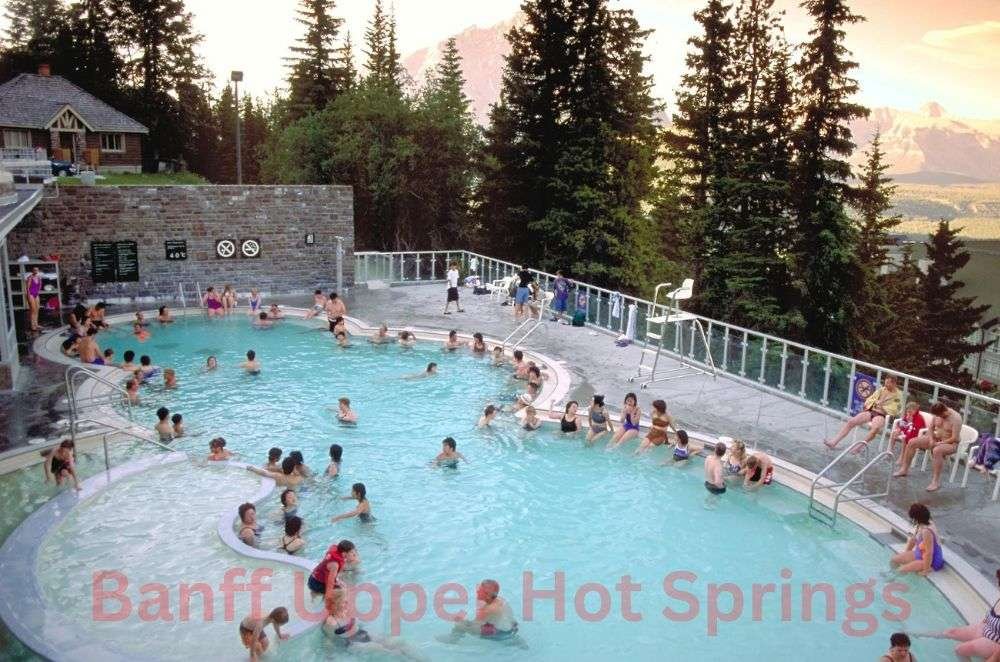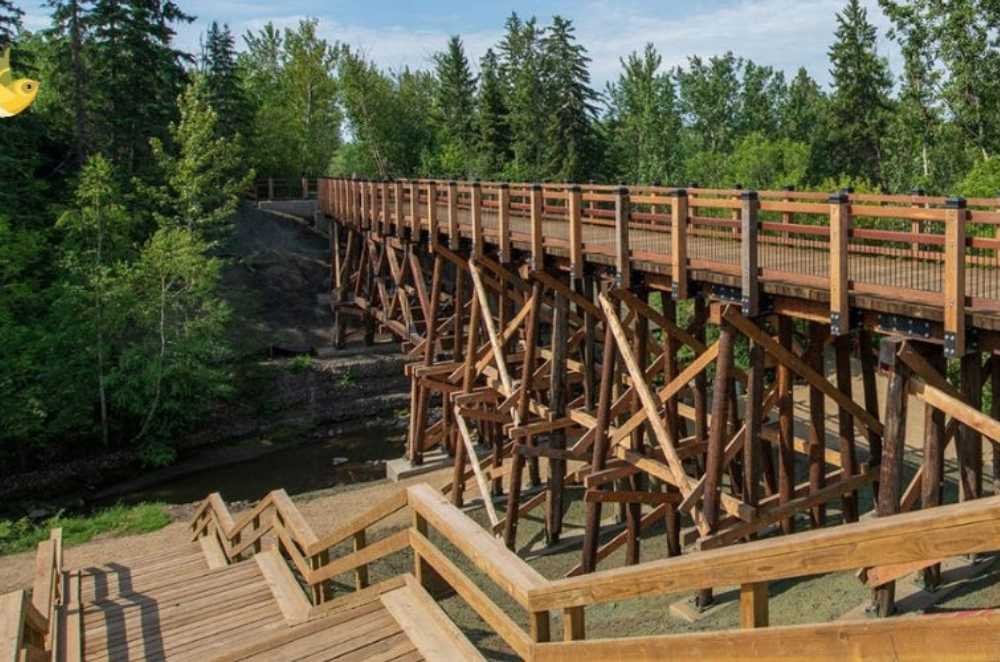Banff National Park sits in the province of Alberta, Canada, nestled right inside the majestic Rocky Mountains. From alpine lakes to rugged peaks, this park covers a huge area of wilderness and natural beauty.
It’s no surprise that Banff is one of Canada’s most famous destinations. More than 4.28 million visits were recorded in the 2023/24 year — a record high for the park. That means people from all over the world are drawn to its mountains, rivers, wildlife and scenic views.
Here’s the good news: getting to Banff is easier than you might think. Whether you prefer flying in, driving yourself, catching a bus or hopping on a shuttle, there are solid options. We’ll cover how to get there by air, by car, by bus and by shuttle — so you can choose the travel style that fits you best.
In the next sections, I’ll guide you step by step on how to get to Banff National Park from major cities — like Calgary, Edmonton, Jasper, Vancouver — and even from the USA. By the end of the post, you’ll have a clear map in your mind of how to reach Banff and how to pick the best way for your trip.
1. Getting to Banff by Air
If you’re flying in, your journey will almost always start at Calgary International Airport (YYC). This is the main airport closest to Banff National Park, and it connects you to the Rockies in the fastest and most convenient way.
From Calgary Airport, it takes about 1.5 hours (130 km) to reach Banff by road. Whenever I visit Banff, this is the route I use, and it’s the one most visitors choose too. YYC handles millions of passengers each year, so you’ll have plenty of flight options and easy ground transportation when you arrive.
YYC offers a strong mix of domestic and international flights, which makes planning your trip simple.
You can fly directly from major Canadian cities like Toronto, Vancouver, Edmonton, Winnipeg, and Montreal.
If you’re coming from outside Canada, you’ll find direct routes from many parts of the USA, along with flights from Europe, Mexico, and other international hubs. This makes Banff an accessible destination for travellers from all over the world.
2. Getting to Banff by Car
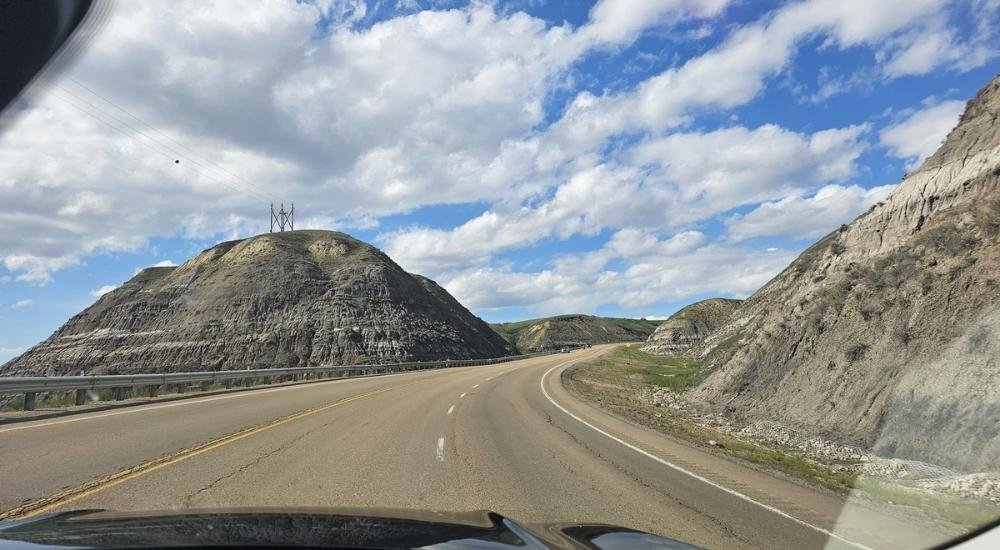
Driving to Banff National Park is one of the most enjoyable parts of the trip. If you love open roads, mountain views, and the freedom to stop along the way, you’ll enjoy this option as much as I do. The routes are simple, the scenery is incredible, and the road system in Alberta makes the drive smooth for most travellers.
The main road that takes you straight into Banff is Highway 1, also known as the Trans-Canada Highway. This is one of the busiest and most important highways in the country, and it’s designed for easy travel. It’s well-marked, paved, and open year-round, with only rare closures during major storms or accidents.
As you drive west toward the Rocky Mountains, the views get better with every kilometre. From rolling foothills to towering peaks, the entire route feels like a preview of what’s waiting for you inside Banff National Park.
Winter Driving Tips
If you’re travelling in winter, your experience can still be amazing, but it helps to be ready for colder conditions. I’ve driven this route many times in winter, and preparation makes all the difference.
Here are a few simple tips to keep your trip safe:
- Roads can be icy, especially early in the morning or after fresh snowfall.
- Use winter tires from October to April. They grip icy roads much better than all-season tires.
- Check the weather and road conditions before driving. Alberta’s weather can change fast, so it’s smart to check updates from 511 Alberta before hitting the road.
With the right tires and a quick weather check, your winter drive can still be smooth and enjoyable.
Parking in Banff
Parking in Banff has improved over the years, and you have several good options.
- Downtown Parking: You’ll find street parking and public lots around Banff Avenue. Many spots fill up quickly during summer, so arriving early helps.
- Free Public Parking Lots: Banff offers large free lots, like the one at the Fenlands Recreation Centre. From there, you can walk or take Roam Transit into town.
- Parks Canada Pass: Before you enter Banff National Park, remember that you need a valid Parks Canada pass. You can buy it online, at the park gates, or at visitor centres. Keep it visible on your dashboard.
3. Getting to Banff by Bus
Taking a bus to Banff is one of the easiest and most budget-friendly ways to reach the park. I’ve used this option once when I didn’t feel like driving, and it surprised me how smooth and stress-free the trip can be. If you want a simple ride with no parking worries, the bus is a great choice for your Banff adventure.
Bus Companies to Banff
You have several reliable bus companies that run routes to Banff. Each one offers a comfortable ride with space for your luggage and clear schedules, so you can plan without stress.
- On-It Regional Transit – A seasonal service that usually runs in spring, summer, and fall. It offers low-cost rides from Calgary to Banff on weekends and holidays.
- Rider Express – Year-round service with routes from Calgary and other Western Canada cities.
- Red Arrow / Mountain Connector – Known for comfort, great service, and reliable schedules.
- FlixBus – Popular for budget travel and simple online booking.
- Ebus – Another option with comfortable coaches and steady departure times.
These companies keep the trip simple, with departures from downtown Calgary or other convenient pickup points.
What to Expect
Taking the bus to Banff is a relaxed way to travel. You can sit back, enjoy the views, and save money at the same time.
Here’s what you can expect:
- Affordable prices: Bus tickets usually cost far less than renting a car or booking a private transfer.
- Comfortable seats and luggage space: Most coaches offer soft seats, climate control, and room for backpacks, suitcases, and ski gear.
- Direct or semi-direct routes from Calgary: Many buses take you straight into Banff, and some stop only once before arriving. The trip is smooth, and you don’t have to deal with city traffic or mountain driving.
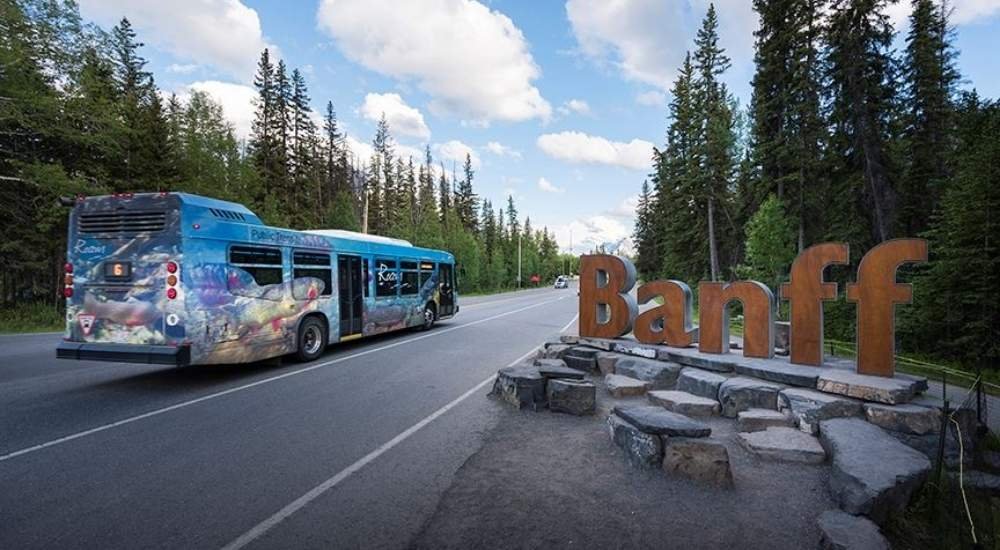
4. Getting to Banff by Shuttle Bus
Using a shuttle bus to reach Banff is a great choice if you want a smooth, guided ride without the stress of driving. I often recommend shuttles to friends visiting for the first time, because the service is reliable, the drivers know the area well, and you can simply enjoy the mountain scenery along the way.
Airport Shuttles
If you’re landing at Calgary International Airport (YYC) and want a direct ride to Banff, you’ll find several trusted shuttle services ready to go. These companies run daily and offer comfortable seats, space for luggage, and convenient drop-off points.
Here are the main airport shuttle options:
- Banff Airporter: One of the most popular choices. They offer regular departures throughout the day and are known for being on time. The ride takes about 1 hour and 45 minutes.
- Brewster Express: A long-standing travel company in the Rockies. They provide large, comfortable coaches with plenty of space. Great for families, groups, or anyone with extra gear.
- RTB / Other Shuttle Services: Several smaller companies also run direct shuttles from YYC to Banff. They often offer flexible schedules and door-to-door service.
These airport shuttles make your trip simple from the moment you arrive. You just step on board and let the driver take care of the rest.
Hotel Shuttles
Some hotels in Banff partner with local shuttle companies to help guests reach the town without hassle. If you’re staying at a resort or a higher-end hotel, you may be able to book a shuttle that takes you directly from Calgary Airport to your hotel’s doorstep.
Other hotels arrange drop-offs at central spots in Banff, such as the main bus station or popular landmarks. This is handy if you want to walk around town or take Roam Transit to your final destination.
Using a shuttle bus gives you a calm, comfortable way to start your Banff trip. It’s perfect for travellers who want a safe, easy, and scenic ride into the heart of the Canadian Rockies.
5. How to Get to Banff from Major Cities
One thing I love about Banff National Park is how easy it is to reach from different cities in Western Canada. Each route offers its own kind of scenery and experience, so you can choose the path that fits your travel style. Here’s a friendly, simple guide to help you plan your trip from Calgary, Edmonton, Jasper, and Vancouver.
Going from Calgary to Banff
Calgary is the closest major city to Banff, and the route is fast and straightforward. The distance is about 130 km, and the drive usually takes 1.5 hours. This option is fun; aside from the scenery, there are other things to do on the road. Read my post about fun road attractions between Calgary and Banff.
To get there, you head west on the Trans-Canada Highway (Highway 1). The road is smooth, wide, and easy to follow. I use this route every time I visit Banff from Calgary, and the mountain views never get old.
You have several ways to make the trip:
- Car: The most flexible option.
- Shuttle: Airport shuttles or downtown-to-Banff services run daily.
- Bus: Budget-friendly and comfortable.
- Guided tours: Great if you prefer a planned itinerary.
No matter the option you choose, the Calgary-to-Banff route is one of the simplest ways to enter the Rockies.
Going from Edmonton to Banff
The distance from Edmonton to Banff is around 415 km, and the drive takes about 4 hours. You can reach Banff using two main routes, and I’ve taken both many times.
Route 1 (Fastest): Take QE2 south to Calgary, then continue west on Highway 1 into Banff.
This is the quickest and most common path.
Route 2 (Most Scenic): Drive west on Highway 16 to Jasper, then follow the Icefields Parkway (Highway 93) south all the way to Banff.
This route is longer but offers amazing views of glaciers, mountains, and turquoise lakes.
If you prefer public transportation, you can take the Red Arrow from Edmonton to Calgary, then transfer to a bus or shuttle heading to Banff.
Get to Banff through Guided Tours
You can also get to Banff by joining a guided tour, which is one of the easiest options if you don’t want to drive. Many tour companies operate from Calgary, Banff, and Lake Louise, and some even offer longer trips from Edmonton or Vancouver. These tours usually include comfortable transportation, a knowledgeable guide, and visits to top attractions like Lake Louise, Moraine Lake, and the Banff townsite. It’s a simple and stress-free way to reach the park and enjoy the Rockies without worrying about planning routes or parking.
Join a Guided Banff National Park Tour

Skip the planning and let a professional guide show you Banff’s top attractions. Comfortable transport, great photo stops, and expert knowledge included. Click below to check prices and secure your tour.
6. Going from the USA to Banff
If you’re travelling from the United States, getting to Banff National Park is simpler than most people expect. Many American visitors make this trip each year, and you can do it by car or by flying into Alberta. I’ve met plenty of travellers on the road who loved the journey because the scenery becomes more dramatic the closer you get to the Rockies.
Driving from the US to Banff
If you plan to drive, the closest border crossings into Alberta are in the state of Montana. These crossings connect directly to major highways that lead you north toward Calgary, and then onward to Banff.
Here are the two main ports of entry:
- Coutts / Sweetgrass Border Crossing:
The busiest crossing between Montana and Alberta. Once you enter Alberta, you continue north on Highway 4, which becomes Highway 2 toward Calgary. From Calgary, follow Highway 1 west into Banff. - Carway / Peigan Border Crossing:
A quieter crossing that connects to Highway 2 and Highway 5. This route also leads you north toward Calgary before joining Highway 1.
The drive is smooth, and the highways are well-maintained. As you move closer to Banff, the flat prairies slowly turn into rolling foothills and finally the dramatic Rocky Mountains.
Flying from the US
If you want a faster and easier trip, flying is a great option. Most U.S. visitors fly directly into Calgary International Airport (YYC). The airport offers flights from major American cities, which will make your travel straightforward.
Once you land, you can then:
- Rent a car for full flexibility.
- Take an airport shuttle for a relaxed, no-driving experience.
- Use a bus service if you’re travelling on a budget.
Like I said before, the trip from Calgary to Banff takes about 1.5 hours.
7. How to Get Around in Banff

Getting to Banff is one thing, and moving around in the park is another. But moving around Banff is easier than most people think, and you don’t always need a car to enjoy the park. When I visit Banff from Edmonton or after a trip to Calgary, I like to mix driving with local transit. It saves time, stress, and money on parking. Here’s how you can explore Banff National Park smoothly:
Roam Transit (Best for Stress-Free Travel)
Roam Transit is the main public bus system in Banff, and it’s honestly one of the easiest ways to move around. The buses connect you to major spots like:
- Banff Avenue (downtown)
- Banff Gondola
- Lake Minnewanka
- Tunnel Mountain
- Canmore (on selected routes)
The buses run frequently, the fares are affordable, and many routes operate year-round. If you prefer not to deal with traffic or finding parking at popular places like Lake Minnewanka or the Upper Hot Springs, using Roam Transit is a smart choice.
Driving in Banff (Most Flexible Option)
Driving gives you the most freedom, especially if you want to explore spots outside the townsite. I often drive when I’m taking photos, checking out viewpoints, or heading deeper into the mountains.
Just keep these things in mind:
- Parking fills up quickly in summer. Places like Moraine Lake no longer allow personal vehicles, so you must use Parks Canada shuttles.
- Winter roads can be icy, so take your time and use winter tires.
- Highway 1 is well-maintained, making it easy to reach nearby areas like Lake Louise.
Parks Canada Shuttles (For Moraine Lake & Lake Louise)
To keep traffic low and protect the environment, Parks Canada has shuttles that take you to Moraine Lake and Lake Louise during peak season. These must be booked ahead of time, especially if you’re travelling from June to October. They run from the Lake Louise Ski Resort Park and Ride and are the only way to reach Moraine Lake by vehicle.
Biking in Banff (Great for Summer)
Banff is bike-friendly, with several safe and scenic routes. If you enjoy exploring at your own speed, renting a bike is a relaxing and sustainable option. Popular routes include:
- Banff Legacy Trail (Banff to Canmore)
- Vermilion Lakes Road
- Tunnel Mountain Drive
Walking around town
Once you’re in downtown Banff, you can walk almost everywhere. Banff Avenue, local restaurants, shops, museums, and viewpoints are all close together. Walking is often faster than driving through the busy town centre.
Best Time to Visit Banff National Park
Banff National Park is stunning all year, but the best time to visit depends on the activities you enjoy and the experience you’re looking for. I’ve visited Banff in different seasons, and each one has its own magic. Here’s a simple guide to help you plan your trip.
Summer (June to August) – Perfect for Hiking and Lakes
Summer is the most popular time to visit Banff. The weather is warm, the trails are clear, and the famous turquoise lakes like Lake Louise and Moraine Lake are at their most beautiful.
- Activities: Hiking, canoeing, wildlife viewing, camping, and photography.
- Tips: Arrive early to popular spots to avoid crowds. Accommodation fills up quickly, so booking in advance is a must.
- Weather: Daytime temperatures range from 18°C to 25°C, but nights can be cooler in the mountains.
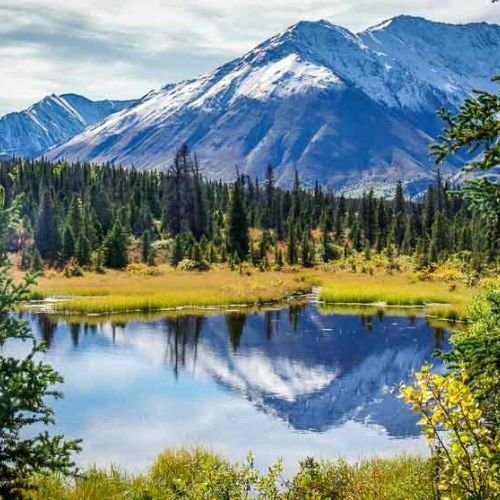
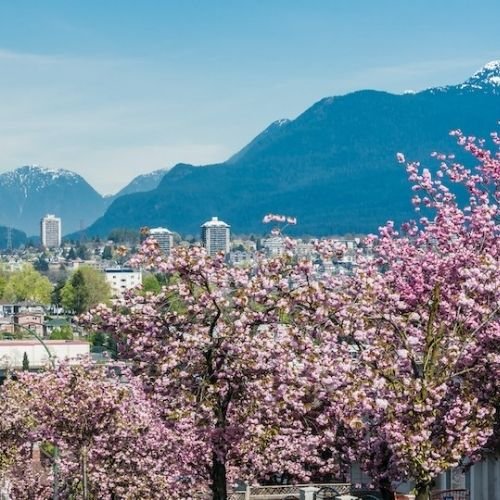
Spring (March to May) – Quiet and Budget-Friendly
Spring is a shoulder season with fewer tourists and lower prices on accommodation. The snow melts gradually, rivers swell, and wildlife becomes more active.
- Activities: Wildlife spotting, short hikes, photography, and scenic drives.
- Tips: Some higher elevation trails may still have snow, so check trail conditions before hiking.
Winter (December to February) – Skiing and Snow Fun
Winter in Banff is magical, with snow-capped mountains and frozen lakes. If you love skiing, snowboarding, or snowshoeing, this is your season.
- Activities: Skiing at Sunshine Village or Lake Louise Ski Resort, snowshoeing, winter photography, and relaxing in hot springs.
- Tips: Roads can be icy. Use winter tires and check Alberta 511 road conditions before heading out.
- Weather: Temperatures range from -10°C to -2°C, and snowfall can be heavy in the mountains.
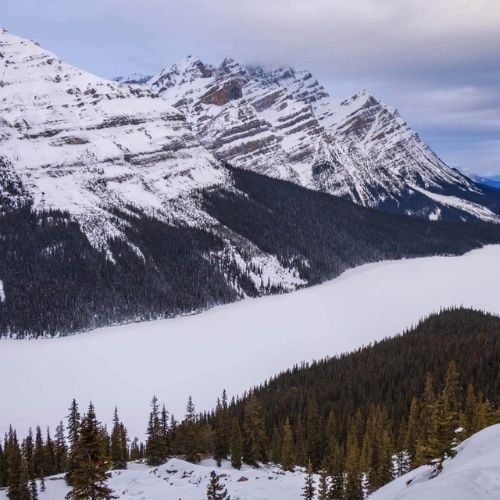

Fall (September to November) – Colours and Peace
Fall is another peaceful time to visit Banff. The forests turn golden, and the crowds are smaller than in summer. It’s ideal for scenic drives, photography, and quiet outdoor activities.
- Activities: Hiking, sightseeing, photography, and enjoying fall foliage.
- Tips: Some seasonal services and shuttle routes start to reduce in October, so plan accordingly.
Banff National Park Pass Prices
To enter Banff National Park, you’ll need a Parks Canada pass. The fee helps protect the park, maintain trails, and support wildlife programs. The good news is that the prices are clear and simple, and you can choose the pass that fits your trip.
Below is an easy breakdown of the 2025 Banff National Park pass fees based on information from Parks Canada.
Daily Admission Pass (Per Day)
A daily pass is great if you’re only visiting for a short time. It stays valid until 4:00 pm the next day, so you actually get more than one day of use.
| Pass Type | Price (2025) | Details |
|---|---|---|
| Adult (18–64) | $11.00 | Standard daily entry |
| Senior (65+) | $9.50 | Discounted rate |
| Youth (6–17) | Free | Perfect for family trips |
| Family / Group (up to 7 people in one vehicle) | $22.00 | Best value for families/groups |
Annual Parks Canada Discovery Pass
The Discovery Pass gives you unlimited entry for 12 months to Banff and every other national park or historic site in Canada. This is a great choice if you’re staying multiple days, coming back later in the year, or planning a Canadian road trip.
| Pass Type | Price (2025) | Details |
|---|---|---|
| Adult | $75.25 | Valid for 12 months |
| Senior | $64.50 | Discounted yearly rate |
| Family / Group | $151.25 | Up to 7 people |
Which Pass Should You Choose?
- Pick the daily pass if you’re visiting Banff for one or two days.
- Go for the Discovery Pass if you’re staying three or more days, planning to see Banff and Jasper, or visiting other national parks in Canada. It pays for itself quickly.
- Families of up to seven people will usually save money with the family/group option.
Why You Need a Pass
Parks Canada uses these fees to:
- Maintain hiking trails
- Keep facilities clean and safe
- Protect wildlife and natural ecosystems
- Improve roads and parking areas
You may be asked to show your pass at popular trailheads, parking areas, or park gates, so keep it handy.
Conclusion: How to get to Banff National Park
Getting to Banff National Park is easier than many people think, and by now you’ve seen all the ways you can reach this amazing place. You can fly into Calgary International Airport, rent a car, or hop on a shuttle straight to the mountains. You can also drive on the Trans-Canada Highway, take a comfortable bus, or plan a longer road trip from cities like Edmonton, Jasper, Vancouver, or even from the United States.
As you plan your trip, choose the option that feels right for your travel style. Some people enjoy the freedom of driving, while others like the convenience of shuttles or buses. No matter how you decide to get here, the journey is part of the adventure.
Once you arrive, Banff welcomes you with turquoise lakes, rugged mountains, quiet forests, and some of the most beautiful wildlife in Canada. I visit this park often, and every trip feels new. I hope your visit gives you that same sense of wonder and peace.
FAQs about Banff
Where is Banff National Park situated?
Banff National Park is in the province of Alberta, in western Canada. It sits inside the Rocky Mountains and is known for its lakes, mountains, and wildlife. The main town, Banff, is about 1.5 hours west of Calgary.
What is the difference between Banff and Banff National Park?
Banff is a small town with hotels, restaurants, and shops. Banff National Park is the large protected area that surrounds the town. The park includes mountains, lakes, forests, and many outdoor activities. The town of Banff is simply one part of the larger national park.
How do I get to Banff National Park?
Most people travel to Banff by flying into Calgary International Airport and then driving or taking a shuttle. You can also reach Banff by car, bus, or guided tour. Highway 1 (Trans-Canada Highway) takes you straight into the park. Some visitors also arrive from Edmonton, Jasper, Vancouver, or the United States.
Does Banff National Park have shuttle service?
Yes, several shuttle services run to Banff. Popular options include Banff Airporter, Brewster Express, and other YYC-to-Banff shuttles. Inside the park, Roam Transit also offers local and regional buses to major attractions like Lake Louise and Moraine Lake.
What is the best month to visit Banff?
July and August are the best months for warm weather and hiking. Winter months like December and January are ideal for skiing. Spring and fall are quieter and usually cheaper. Your best time depends on the experience you want.
Is Banff close to Calgary?
Yes, Banff is very close to Calgary. It is about 130 km away, which takes around 1.5 hours by car. This makes Banff one of the easiest national parks to reach in Canada.
